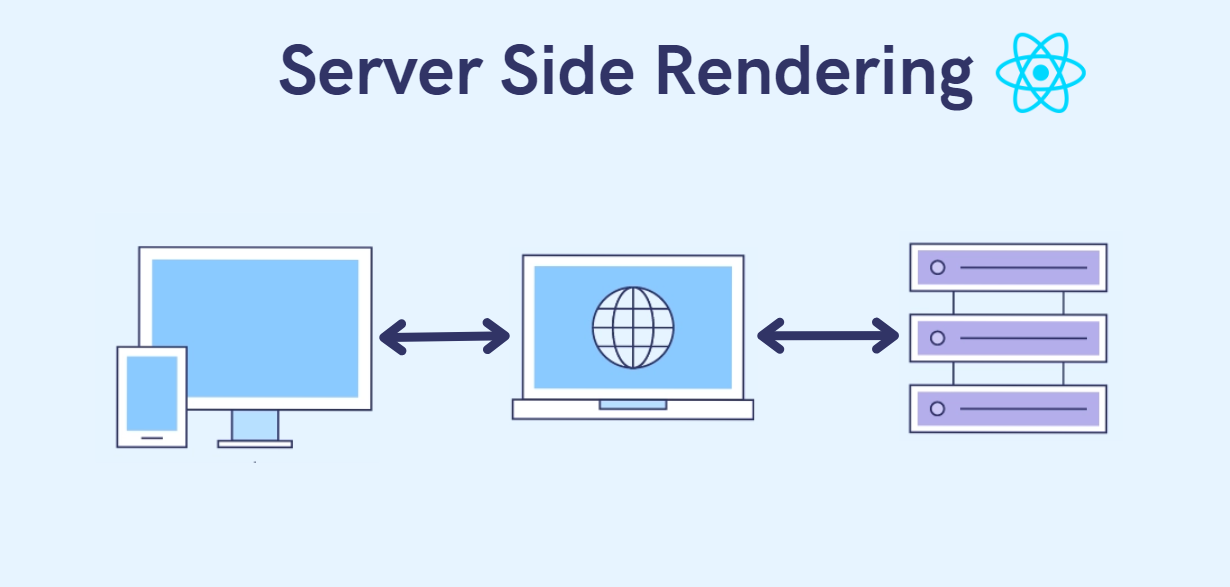I will always remember the depressing realization that my website was not visible on Google. I put a lot of effort into my startup as a business owner, but my leads were being killed by my React app's subpar SEO. At that point, I learned about server-side rendering (SSR) using Next.js. SSR is a lifeline for companies that want faster pages, higher search engine rankings, and more sales—it's not just a developer's trick. At Fykel, we've transformed our clients' online presences using SSR. This tutorial explains how to use SSR in Next.js and offers helpful advice to increase the functionality and revenue of your application.
What is Server-Side Rendering (SSR)?
Creating your web pages on the server before delivering them to the browser is known as server-side rendering. SSR provides fully-rendered HTML, in contrast to client-side rendering (CSR), which uses JavaScript to create the page in the user's browser. This improves the speed at which your pages load and facilitates better content crawling by search engines.
Why is this important? Google favors websites that are quick to crawl. A sluggish or JavaScript-heavy app can hurt your rankings and drive away users. To be honest, I didn't understand SSR at first because it sounded like technical jargon. However, I knew it was revolutionary for businesses after witnessing it increase a client's organic traffic by 50%.

Setting Up Next.js for SSR
Starting SSR in Next.js is easier than you might imagine. Next.js was designed with SSR in mind, so you don't have to deal with complicated configurations. Let's go over how to prepare your React application for server-side rendering.
Step 1: Create a Next.js Project
Create a new Next.js application first. Launch your terminal and type:
npx create-next-app@latest my-ssr-app
cd my-ssr-app
npm run devThis launches a development server at http://localhost:3000 and generates a simple Next.js application. You can experiment with SSR here.
Step 2: Install Dependencies
SSR is handled by Next.js by default, so you don't need additional packages for simple setups. However, you may want to use the built-in fetch API or install a library like Axios if you're retrieving data from an API.
npm install axiosEarly on, I recall struggling with dependencies and questioning whether I was making things too complicated. Next.js keeps it lean so you can concentrate on building rather than configuring.
Step 3: Verify Your Setup
Run npm run dev and go to localhost:3000. The default Next.js welcome page ought to appear. To verify that HTML is being rendered server-side, view the page source by performing a right-click and selecting "View Page Source." You're headed in the right direction if you see structured HTML rather than a blank

Building SSR Pages in Next.js
Making server-side rendered pages is the exciting part now. Next.js makes this simple with its getServerSideProps function, which retrieves and renders data on the server side for every request. To see it in action, let's create an example page.
Creating an SSR Page
Make a new file called products.js and place it in the pages directory. Here's an example:
export async function getServerSideProps(context) {
const res = await fetch('https://api.example.com/products');
const products = await res.json();
return {
props: { products },
};
}
function Products({ products }) {
return (
Our Products
{products.map((product) => (
- {product.name}
))}
);
}
export default Products;This page sends the data to the browser after rendering it as HTML and retrieving it from the server. It loads quickly for users and is easy for search engines to crawl.
Adding Dynamic Routes
Use dynamic routes for dynamic pages, such as product details. Make a file similar to pages/products/[id].js:
export async function getServerSideProps({ params }) {
const res = await fetch(`https://api.example.com/products/${params.id}`);
const product = await res.json();
return {
props: { product },
};
}
function Product({ product }) {
return (
{product.name}
{product.description}
);
}
export default Product;This creates a distinct page for every product ID, making it ideal for websites with a lot of content or e-commerce. When I created a similar configuration for a client's blog, their Google click-through rates increased by 20%.
Handling Errors
Add error handling to keep your app robust because APIs can fail:
export async function getServerSideProps() {
try {
const res = await fetch('https://api.example.com/products');
if (!res.ok) throw new Error('Failed to fetch');
const products = await res.json();
return { props: { products } };
} catch (error) {
return { props: { products: [], error: error.message } };
}
}
function Products({ products, error }) {
if (error) return Error: {error};
return (
{products.map((product) => (
- {product.name}
))}
);
}
export default Products;This keeps users satisfied and your site dependable by preventing your app from crashing in the event that the API behaves badly.
Optimizing SSR in Next.js
SSR is strong, but if it isn't optimized, it can put a lot of strain on your server. These expert pointers will help you maintain the speed, scalability, and SEO-friendliness of your Next.js application.
1. Cache API Responses
It can be slow to fetch data for each request. Use caching with Next.js's built-in response caching or tools like Redis:
export async function getServerSideProps({ res }) {
const data = await fetch('https://api.example.com/data').then((r) => r.json());
res.setHeader('Cache-Control', 's-maxage=60, stale-while-revalidate');
return { props: { data } };
}This reduces server load by caching the response for 60 seconds.
2. Use Incremental Static Regeneration (ISR)
Use ISR instead of SSR if your data doesn't change frequently:
export async function getStaticProps() {
const res = await fetch('https://api.example.com/data');
const data = await res.json();
return {
props: { data },
revalidate: 60,
};
}ISR gives you the SEO advantages of SSR with static-site speed.
3. Optimize Rendering Performance
Avoid complex calculations in getServerSideProps. Use workers or APIs for heavy tasks. Also, optimize images using the Image component:
import Image from 'next/image';
function Product({ product }) {
return (
{product.name}
This ensures fast and clean rendering even with rich media.
4. Monitor Performance
Use tools like Lighthouse or Vercel Analytics to monitor performance. Track metrics like LCP and TTFB. At Fykel, we focus on these to ensure great user experiences.
Conclusion: Build SEO-Friendly Apps with Next.js SSR
Using Next.js for server-side rendering is a business strategy as much as a technical decision. SSR helps you rank higher, engage users, and increase revenue by producing quick, SEO-friendly pages. This guide provides you with the resources you need to be successful, from project setup to performance optimization.
Fykel excels in that situation. We create Next.js apps that are economical and search engine optimized to help you expand your company. Are you prepared to increase your online visibility? Visit our contact page or send us an email at [email protected]. Together, we can make your app profitable, quick, and visible.


